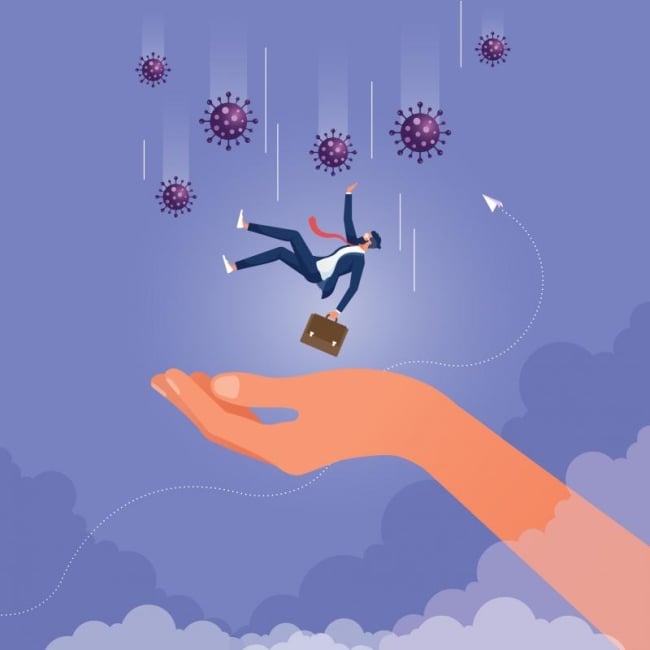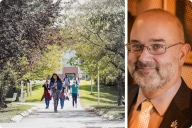You have /5 articles left.
Sign up for a free account or log in.

treety/istock/getty images plus
I come from a line of healers. My maternal grandmother was a midwife and healer in her rural village in Puerto Rico. My mother, who experienced family separation and adversity as a child, was a reconciler and healer of relationships. And I unintentionally followed their lead. I became a clinical psychologist who supported couples and families seeking healing from chronic illnesses.
But it's only after moving to a new institution and becoming a dean during a global pandemic that I've realized how healing can be brought into many aspects of work, including academic leadership.
Healing leaders are needed not only because we are still in the midst of a global pandemic, but also because we continue to face crises -- including white supremacy, heterosexism and cis-sexism, and violence against many marginalized communities -- that have harmed our academic institutions and the people we serve. In addition, many of our institutions and our people are hurting because of financial strain. If ever we needed healing leaders, this is the time.
But what makes a leader a healer? The metaphor of "healer" provides a lens through which we can see the value of specific skills that effective leaders can practice.
Observe and assess. The first act of a healer is to assess how people are thriving and to spot any injuries, wounds, or infections that may need healing. When I began my new role as dean last summer, I was worried I would not be able to assess the health of my unit or its individual members over Zoom. I quickly realized I was wrong. Yes, videoconferencing can be stressful, but it is also useful for taking the pulse of your community. As I have taught my research students over the years when coding videorecorded interactions of couples, we must listen not only to the words people use but also how they express emotions -- including tone of voice, facial expressions (eye rolls are most telling and a sign of contempt) and body language.
I've learned it is even possible to read a room by video, perhaps even more so than when we were seated around a conference table. Does everyone look distracted when a particular person speaks or a topic is brought up? Is the conversation engaged and energetic? Are people smiling (real Duchenne smiles that you can see in the eyes)? Getting a sense of what enlivens or deflates people is important as you assess the health of your system and learn where to intervene.
Validate others. Part of conducting a good assessment means validating the experiences of others. Oftentimes, we jump into problem-solving mode or tell people that they do not need to worry about a challenging experience. When that happens, the discloser will clam up or feel misunderstood, and we miss an opportunity to learn more. In contrast, I try to offer genuine acceptance and validation. ("I'm sorry to hear that" or "That sounds really frustrating!"). Validation is a key practice in evidence-based therapies like Dialectical Behavior Therapy and a core part of relationship-building.
Unfortunately, this skill is in short supply. I know because I've often surprised people when I've listened and validated their experience, even when they are complaining about something I did. They expected me to ignore them, treat them with disdain or listen without acting. We may not always agree on the solutions, but we both gain when I respond with validation: we build trust in each other, and I learn about the ecosystems that need healing, including ways I can become a healing presence. An added benefit is that I feel more connected to others, which is important to fulfill my own need for healing. (More on that later.)
Conduct wellness checks. A healing leader shows curiosity by making time to ask questions even in the absence of a health crisis. I hold virtual dean's coffee hours several times per month. I reserve some of them for people who might feel safer sharing their experiences with similar peers -- such as nontenured faculty, BIPOC, and LGBTQIA faculty and staff members. I encourage faculty, staff and students to ask me anything they want to know about me personally ("What do you do for fun?" "Why did you choose to move from a major research university to an undergraduate teaching institution?") or my work in the dean's office ("Why was a particular decision made?")
I also encourage them to share their experiences with me. Attendees have taken me at my word, confiding their hopes, dreams and pains with me in those meetings.
Being available to others has been a positive experience, but I know some leaders fear opening themselves up in this way because they might be challenged or were taught to keep some distance from the people they lead. However, authentic connection is vital, because as long as we continue to embrace distanced leadership, we will continue to see a dearth of women, BIPOC and other marginalized identities in academic leadership positions. In contrast to an impersonal style of leadership, community-oriented leadership can be healing, especially for communities coping with racist attacks and incidents. Healing leaders who use their people-oriented leadership skills lead with humility and courage, using their wellness checks to build a healing community.
Build and empower an inclusive team. True healers are not like the TV medical professionals who make the diagnosis and identify the appropriate treatment all by themselves. How we form our teams matters, as well. In my new role, I stumbled onto this when I invited participation on a new diversity and inclusion council. I was thrilled when 40 faculty members, staff members and students volunteered. I later learned that throwing the doors open to people with the interest, energy and skills to do this work was an equity-building strategy, as there were no prerequisites to gain entry. The result is that we have many people in this group who have not been able to share their innovative ideas before because of systemic barriers related to rank, faculty/staff titles and a lack of built-in networks.
Healing leaders empower their teams by providing opportunities for everyone to have a voice, giving credit where it is due or making it possible for people to share their ideas more widely. For example, when a faculty member described during a coffee hour how she supports student thriving by building days into her syllabus for "care for the whole person" (cura personalis in Jesuit education terminology), I publicly shared her idea, with attribution. This action signaled the dean's endorsement of her healing approach and that I value the contributions of others.
I have also hosted virtual forums and town halls that have enabled new voices to present their work, including how they bring healing to their communities and classrooms. This is more than simple recognition, which is important but not sufficient. Healing leaders amplify the voices of others, empowering them to contribute to the mission of building a healing culture.
Look for holistic solutions. While establishing a healing culture, healing leaders can begin to creatively dismantle and disrupt the systems that make people sick, including systemic and institutional racism. To do this effectively, healing leaders must listen to the people most affected by institutional "-isms" including staff, contingent faculty, pre-tenured faculty, women, BIPOC and LGBTQIA people. Framed more positively, healing leaders work toward systems that ensure everyone's health. This is why it is so important for leaders with positional authority and power, who may benefit from the status quo, to listen to and empower those confined to the margins.
This work may be incremental on the way to systemic change. For instance, the use of COVID-19 impact statements in promotion and tenure files doesn't change the system, but it does inform and disrupt the process, especially for academic mothers and caregivers. Additionally, when travel was prohibited due to the global pandemic, faculty and staff told me of their struggles to remain energized by their work. It was clear that professional travel was an opportunity not only to deliver talks but also to think, write and create -- especially important for caregivers and others who have been stretched thin by pandemic obligations and the violence of white supremacy. In response, I repurposed the travel fund to permit a wider range of professional activities, including local personal and group writing retreats, Zoom foreign language partners, editing services, and other activities.
We also gave staff the gift of time to acknowledge their value and contributions. They can now take one day per month to explore skills to keep them energized and fulfilled at work. These solutions do not change the system, but they have provided healing and laid the groundwork for systemic change.
Seek your own healing. I cannot end an essay on healing leadership without acknowledging that leaders bear their own wounds and scars. To offer healing to others, we also need to attend to our own need for healing, especially for those of us who have been dealing with multiple marginalizations and oppressions. Recalling what is important and meaningful to us, and connecting with other people who share those values, are essential for sustaining the energy and imagination required to engage in healing leadership.
More important, we need to learn to notice when we are experiencing overwork and burnout. I know from personal experience that this is hard to do, but let me offer an example. Like many people last fall, I was depleted. I was adjusting to a new job and city, worrying about at-risk family members across the country, and juggling parenting and work. One of my only respites was being out in nature. But the hazardous air quality due to the western wildfires, not to mention the news about the death and destruction they caused for others, prevented even that tiny bit of solace.
I realized that faculty and staff were probably feeling this, too, so I sent a short video disclosing my feelings and my firm belief that we would see the other side of this. I have since shared my hurt, anger, and pain about local and national events that have touched the lives of faculty, staff, and students, especially those on the margins. And I have tried to offer healing resources and action steps.
I realize that some academic leaders will think that a healing approach to leadership is unnecessary or even too "soft." But if part of our job is to develop and sustain the vitality of our units, then we also need to care about the health and wellness of our people as they work to create a healthy future for themselves and for others. That sounds like healing to me.








